The guys return to Everglades National Park, again looking for a predator that Daniel wants to get too close to: the American crocodile (Crocodylus acutus). Listen in as Daniel shares some research, busts croc-related myths, and Steve probably gets a little too excited about how crocs deal with salt water. Bill doesn’t have much to say, but he’s there, too. Enjoy!
This episode was recorded on January 7, 2025 on the Bear Lake Trail in Everglades National Park. The last little bit was also recorded in the Park at the Flamingo Marina.
This month, we head to the tropics and meet the Blue Iguana of the Cayman Islands! This endangered lizard is found nowhere else on the globe save for the island of Grand Cayman in the Caribbean, and just two decades ago, it’s likely there were fewer than 25 animals remaining in the wild. This was a species that was functionally extinct, but thanks to the herculean efforts of a dedicated group of people, the Blue Iguana (Cyclura lewisi) has been brought back from the brink, with over 1000 iguanas now roaming the dry, rocky forests of Grand Cayman. In July of 2024 Bill traveled there to interview Fred Burton, the man many people credit as the main driver behind the effort to save this endemic species.
How hard is it to reintroduce species to a tropical island? Turns out, pretty hard! But it’s so worth it. The rewilding of the Galapagos island of Floreana will make it the largest tropical island ever to be rewilded. Researchers have spent over a decade meticulously planning for the reintroduction of the iconic Floreana Giant Tortoise (Chelonoidis niger niger). Once thought to be extinct, this species, along with eleven other locally extinct endemic animal species, are part of a reintroduction project that has involved the massive task of eradication of introduced predators, as well as the purposeful inclusion of the local population throughout the planning process. This month, Bill and Steve are completely out of their depth, discussing the project with three staff members from Fundación Jocotoco, one of the organizations leading the charge to Rewild Floreana.
This episode’s special guests are Paola Sangolquí, Jocotoco’s Galapagos Program Marine Coordinator, Julieta Muñoz, Conservation Strategy Manager, and Jajean Rose-Burney, the Director of Jocotoco US.
This month, Daniel leads the guys into uncharted waters for the podcast…that’s right, it’s our first-ever episode about fish! The Great Lakes salmon fishery is one of the greatest angling spectacles in the US. Large predatory salmon, native to the Pacific Northwest, are stocked in the Great Lakes region to maintain a world class fishery and control invasive baitfish. The undisputed monarch among these stocked species? The appropriately named King Salmon (Oncorhynchus tshawytscha). While they are fished for year-round, the action heats up when mature King Salmon run (well, they swim, but that’s what it’s called) up the creeks and rivers where they were born or stocked each fall. The salmon run attracts anglers from all over the country, fostering a multi-million dollar industry and countless memories. But what is with all the excitement? Why are Pacific salmon even put here? Dare we even ask, should they be here? In this episode, the guys venture to a popular salmon fishing spot near Lake Ontario and reel in the story of one of the most consequential actions in fisheries management history.
If we want to help wildlife, we need to know when and where they’re moving on the landscape. Dr. Scott LaPoint has spent his career researching just that. When our recent episode on fisher cats left us with a lot of questions, we figured who better to help us out than Dr. LaPoint. He was kind enough to join Daniel and Bill for a hike, sharing his expertise and his amazing ability to communicate science with enthusiasm, humor, and clarity. Join the guys for a wide-ranging discussion on fishers, connectivity, and wildlife-human interaction.
Pinesap (Monotropa hypopitys) is a goofy little plant that parasitizes fungi and can often be found beneath pine trees. It is not the sap of pine trees like Daniel thought. In this episode, Bill leads the discussion about the complex relationships between pinesap, its fungal host, and the tree species the fungi has a symbiosis with. Join the guys as they get caught in a sudden rainstorm and learn about this amazing plant.
The guys are on the trail - both literally and figuratively - tracking down the life history of the fisher - an efficient predator and elusive member of the weasel family whose range is expanding throughout the northeast.
This month, the guys prepare for the upcoming 2024 total eclipse by looking into the research around how animals react to the moon photobombing the sun for a few minutes.
Daniel and Bill journey to south Florida for an episode about the Florida Panther, tackling the questions and misconceptions that leave this cat shrouded in mystery.
Part 2 of our Timber Rattlesnake episode. If you haven’t listened to part 1, go and do that. We’ll wait right here for you.
Love ‘em or hate ‘em, we wager you’ll enjoy this dive into the shiny (not slimy) world of rattlesnakes. This episode, the guys take a close look (but not too close) at the Timber Rattlesnake (Crotalus horridus), trying to show how it’s not out to kill you and also finding out how it ended up on the “Don’t Tread On Me” flag. Plus, they introduce the newest field guide, Daniel!
This month, Bill and Steve visit Floating Fen, although some might call it a bog, or is it a swamp? Thankfully, they’re joined by Erik Danielson, Stewardship Coordinator of the Western NY Land Conservancy (WNYLC), who schools them on the difference between these wetlands. Erik and the WNYLC are trying to preserve Floating Fen, a property home to a unique wetland, extraordinary wildlife, and a diverse forest. Erik guides Bill and Steve through the fen, discussing just what makes a bog a bog and a fen a fen, as well as what makes these peatlands such amazing habitats.
The Bald Eagle (Haliaeetus leucocephalus) is a rare example of a species humans managed to pull back from the brink of extinction by getting off our collective asses and doing some stuff. The typical story told involves the chemical DDT and its negative impacts on the eagle’s ability to reproduce and how the banning of DDT helped restore Bald Eagle populations across the continent. But a few out there question this narrative, claiming that DDT wasn’t a big problem for eagles and that banning it caused billions of unnecessary deaths because it prevented DDT’s continued use in the fight against malaria. These claims are mostly nonsense, drudged up by folks who hate regulations, but looking into them makes for an interesting ride. Join the guys as they find out…DUN DUN DUN…what THEY don’t want you to know about Bald Eagles.
They’re hard-working, tail-slapping, tree cutting machines, and they’re one of the greatest wildlife recovery stories in North America: Castor canadensis, the North American beaver. And, as if all that weren’t enough, apparently their rear ends produce an oil that’s vanilla-scented. Join the guys as they keep their puns and innuendos in check and dive into beavers!
Our six-legged celebration continues! In this second part, the guys wrap up their behind-the-scenes tour of the Cornell University Insect Collection with Jason Dombroskie, collection manager and director of the insect diagnostic lab, and THEN, Jason provides the guys with some eye protection and takes them out into the woods for some nighttime mothing!
This month, Bill and Steve geek out over insects! And it’s because they were lucky enough to have an even bigger insect geek invite them on a field trip. Jason Dombroskie is the collection manager and director of the insect diagnostic lab at Cornell University. His invite to take the guys mothing in July of 2022 turned into a marvelous, day-long adventure:
In part one, you’ll hear the guys meet up with Jason for a tour of his property and an interview delving into Jason’s background and what it’s like to be a professional entomologist (it involves studying lots of insect genitalia, among other things). We follow that up with a behind-the-scenes tour of the Cornell University Insect Collection - an assemblage spanning over 7 million insect specimens representing about 200,000 species, or roughly 20% of the world’s described insect fauna.
So, strap in and prepare yourself for…Insectapalooza!
Have you ever heard a mockingbird imitate a blue jay? How about a seal imitating a Maine fisherman? This month, the guys explore the wild world of vocal mimicry. Birds imitate chainsaws and car alarms, elephants speak Korean; what’s going on? With a special focus on one of the bird world’s best known mimics - the northern mockingbird (Mimus polyglottos) - the guys delve into the research trying to explain why animals - especially birds - feel the need to engage in the wildlife equivalent of, “I know you are, but what am I?”
Black Walnut (Juglans nigra) is a tree well-known for its ability to negatively affect other plants growing nearby, a phenomenon known as allelopathy. But is Black Walnut really as allelopathic as the Internet would have you believe? In this episode, the guys go nuts: delving into this question and many other facets of the fascinating (and tasty?) Black Walnut, including an on-air tasting of Black Walnut syrup. Enjoy!
What’s dark and slimy and over two feet long? It’s an Eastern Hellbender! This aquatic giant salamander, endemic to the eastern and central US, is the largest amphibian in North America, often weighing in at over 4 lbs.! The hellbender (Cryptobranchus alleganiensis) is, not unlike Steve, secretive and slimy but also fascinating. Join the guys for one hell of an episode learning about this rare and disappearing denizen of fast-moving streams.
Jewelweed. Spotted touch-me-not. Orange Balsam. It’s a plant known by many names, and, even if you don’t recognize any of them, you’ve probably popped one of its exploding seed pods. A favorite of hummingbirds and nature-lovers young and old, it’s a species with many stories to share. Listen in as the guys dive deep into the jewelweed patch, eating some seeds, trying to find the source of the “jewel” in jewelweed’s name, and getting to the bottom of the age-old claim that jewelweed is a cure for poison ivy.
In part 2 of this month’s episode, the guys share how past and present research come together to create a realistic plan for bringing the American chestnut back, and Erik shares more about how the Allegany Wildlands fit into the Conservancy’s ambitious effort to create the Western NY Wildway, a network of connected protected lands stretching from Pennsylvania to the Great Lakes and beyond.
This month, Bill and Steve look into the fall and (potential) rise of the American chestnut (Castanea dentata), and they’re joined by Erik Danielson, Stewardship Coordinator of the Western NY Land Conservancy. The Conservancy recently embarked on an effort to acquire the Allegany Wildlands, a unique piece of property that harbors, among its many abundant ecological treasures, remnant American chestnuts. Erik guides Bill and Steve through the property, and, in part 1 of this episode, they discuss the history of the chestnut and the blight that caused its downfall.
This month, the guys set out to discover if daddy longlegs really are the most poisonous spider in the world, but, along the way, they uncover a fascinating array of arachnids and adaptations in the group known collectively as harvestmen. Join them for some mythbusting and a deep dive into the little-known order of arachnids called Opiliones.
The northern flicker (Colaptes auratus) is a common bird that has some exceptionally uncommon behaviors. Unlike most bird species, male flickers take an equal share of egg incubation and feeding, and, in up to five percent of females, a lady flicker will take up with two mates - an older male and a younger male - raising young in two different nests at the same time. In addition, flickers will sometimes lay their eggs in the nests of other flickers, a behavior called intraspecific brood parasitism, another habit rarely seen in birds. Join the guys as they delve into studies exploring the wild and swinging world of northern flicker reproduction.
Spring is here! So, what better time to talk about winter-active insects? Steve recorded this one in February with entomologist and all-around-great-guy Dr. Wayne Gall, and there was no way we could wait until next winter to share it! Join Steve and Wayne as they head into the winter woods, peeling back the snowy curtain that conceals the ecology of these fascinating invertebrates.
This winter (2021) marked the first time a Snowy Owl (Bubo scandiacus) was spotted in New York City’s Central Park in 130 years. Why was it there? Where did it come from? Since 99.9% of the population immediately just thinks of Harry Potter when Snowy Owls are mentioned, the guys wanted to cast the proverbial “Lumos!” and shed some light on the subject.
Join them and guest Daniel Mlodozeniec (photographer and naturalist) as they delve into the Snowy Owl’s ecology in part 1. Then, in part 2, come along as they look into the research behind what drives Snowy Owl irruptions, those irregular migrations that cause Snowies to end up in Central Park and even in places like Bermuda and Hawaii!
This winter (2021) marked the first time a Snowy Owl (Bubo scandiacus) was spotted in New York City’s Central Park in 130 years. Why was it there? Where did it come from? Since 99.9% of the population immediately just thinks of Harry Potter when Snowy Owls are mentioned, the guys wanted to cast the proverbial “Lumos!” and shed some light on the subject.
Join them and guest Daniel Mlodozeniec (photographer and naturalist) as they delve into the Snowy Owl’s ecology in part 1. Then, in part 2, come along as they look into the research behind what drives Snowy Owl irruptions, those irregular migrations that cause Snowies to end up in Central Park and even in places like Bermuda and Hawaii!
Now that Bill’s done droning on about animals, we can finally talk about PLANTS! and CARNIVOROUS plants at that. Steve reviews carnivorous plants in general and then breaks into examples of carnivorous plants that have evolved to eat poop: Roridula spp. in South Africa, Sarracenia purpurea in North America, & Nepenthes spp. in Southeast Asia.
With the high-end guests we’ve recently had on, we’re concerned that the podcast is getting a bit too classy. So, this month, we’re getting down and dirty, delving into the delightful topic of defecation. Specifically, animals and plants that eat poop. We know, it seems gross. We thought so, too. But once we started exploring this surprisingly common behavior (called coprophagy), we were amazed at what we uncovered!

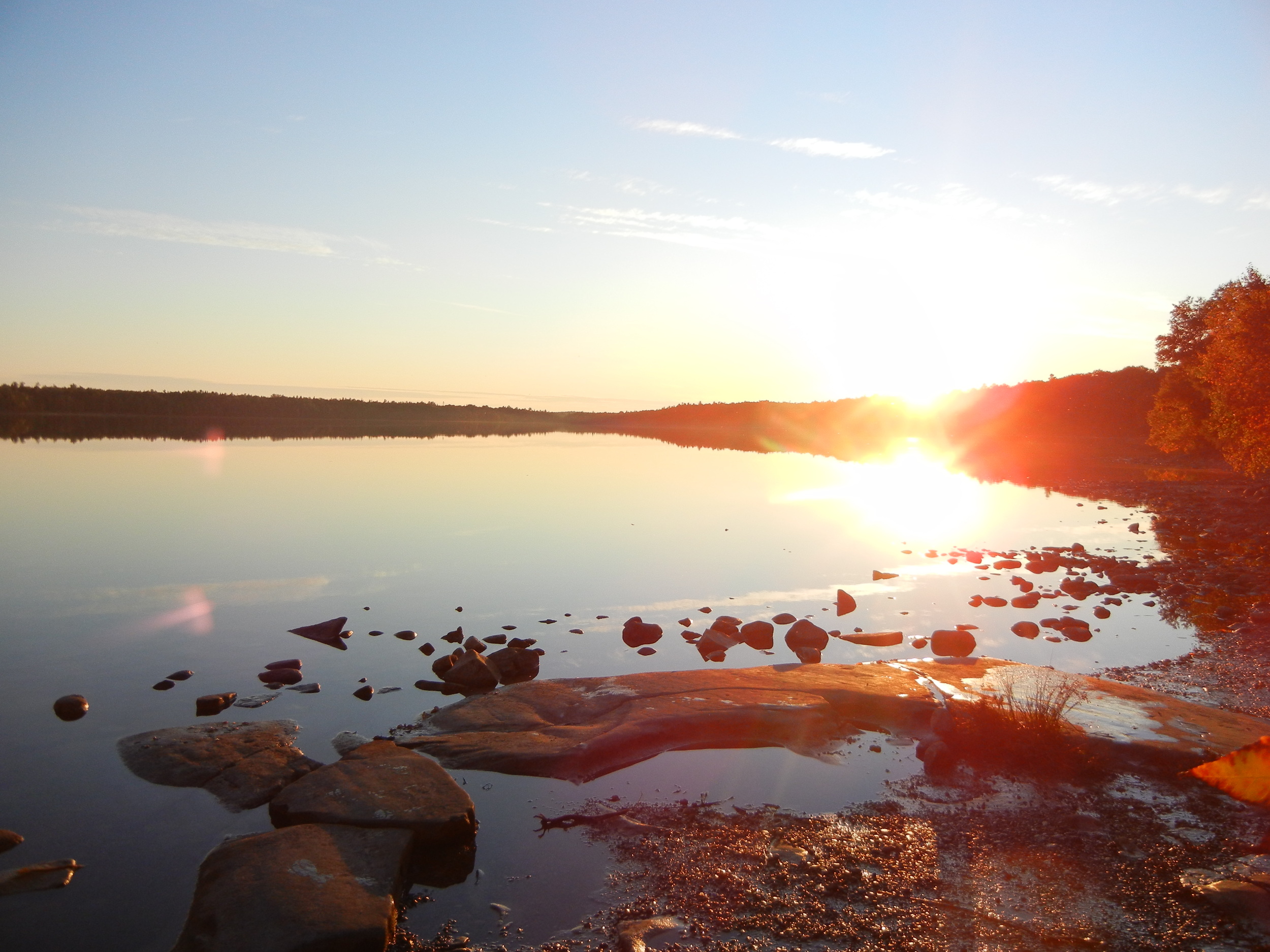



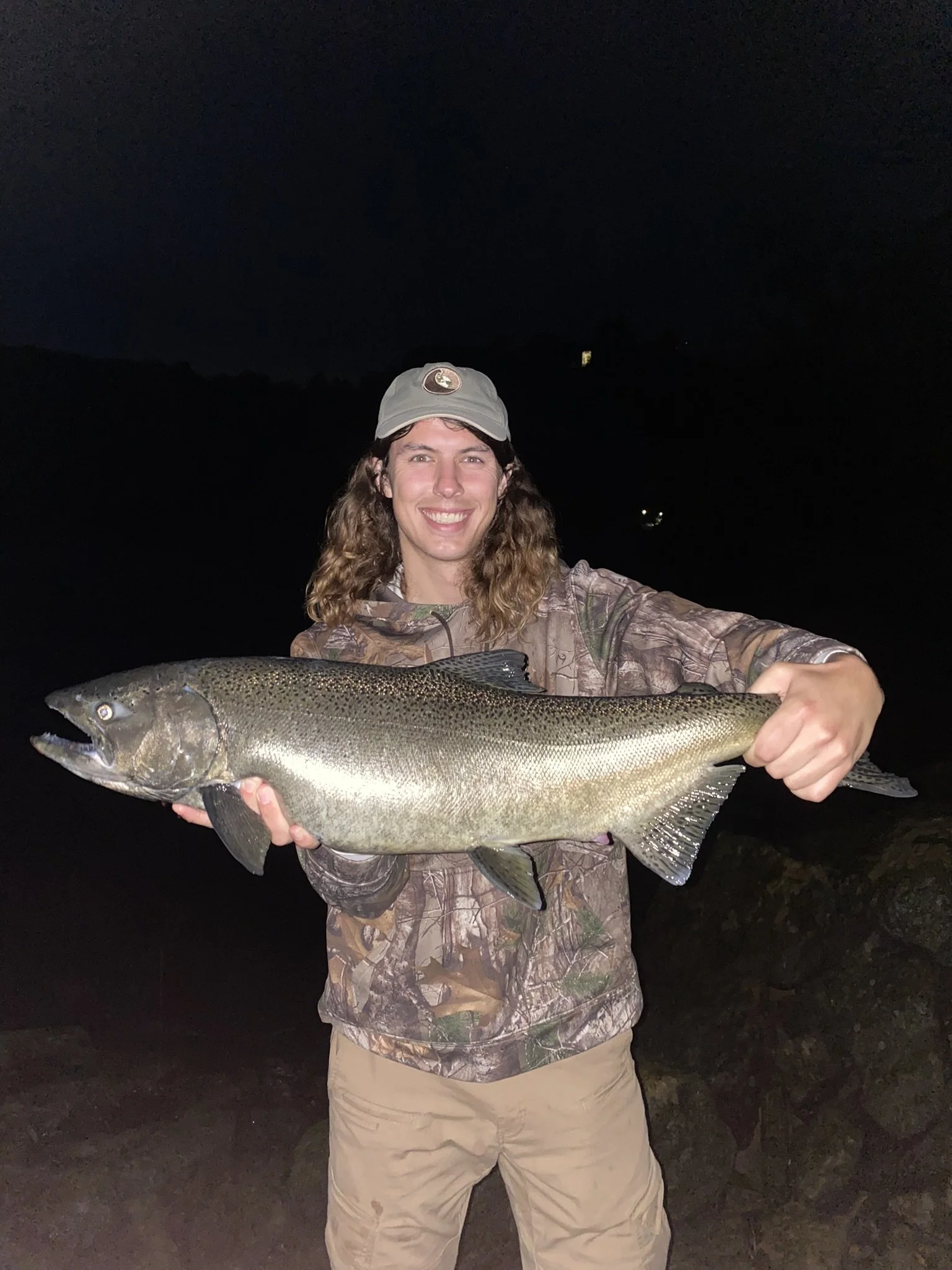
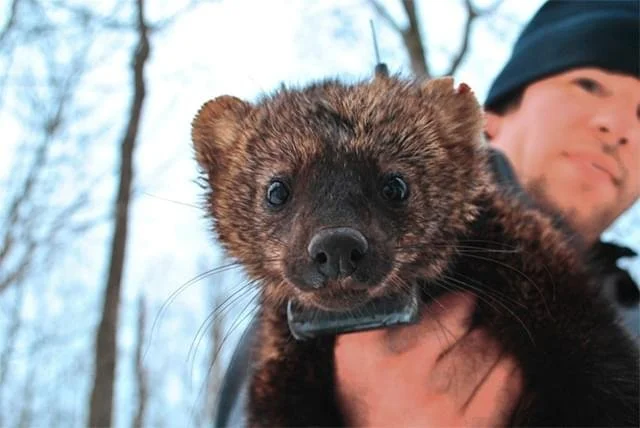






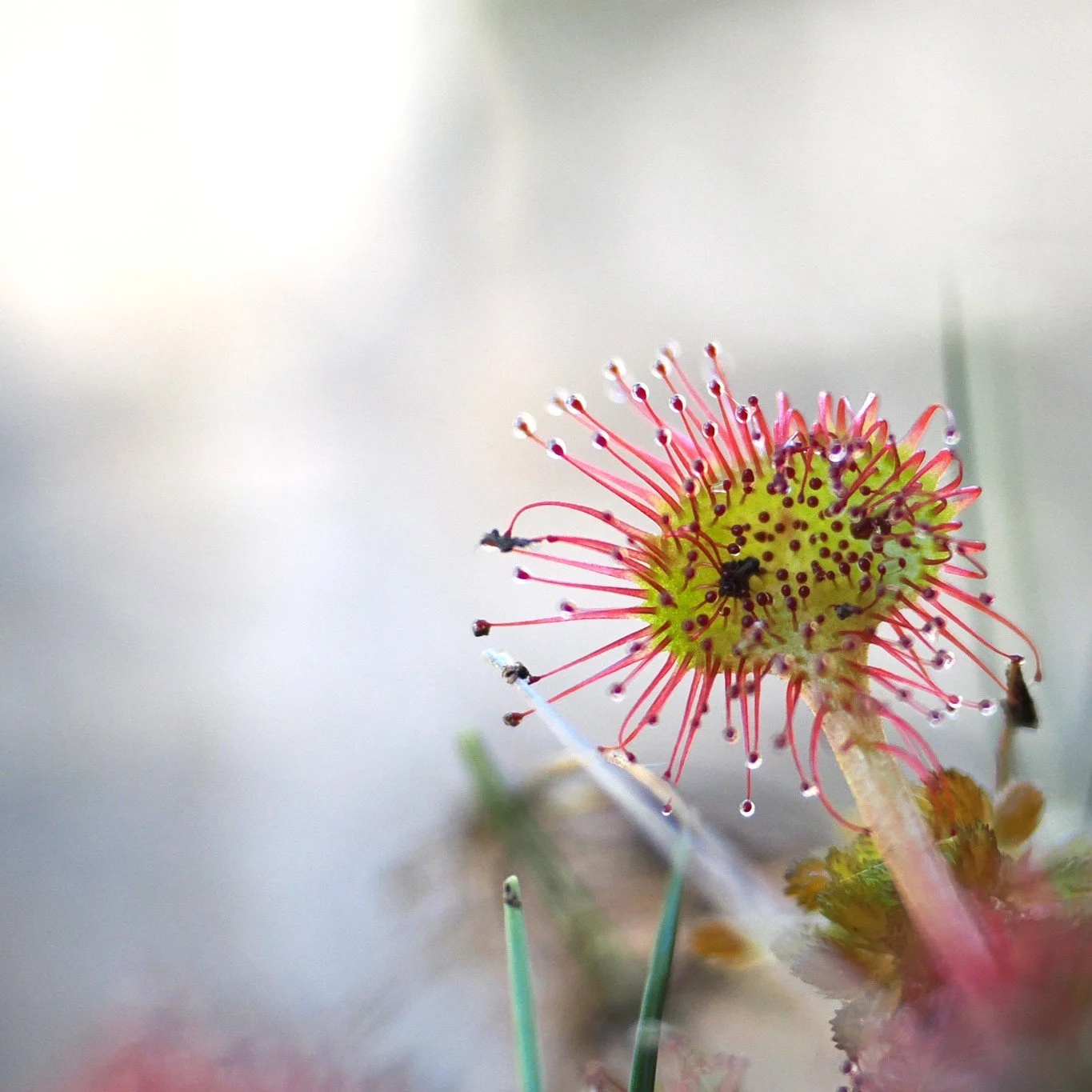


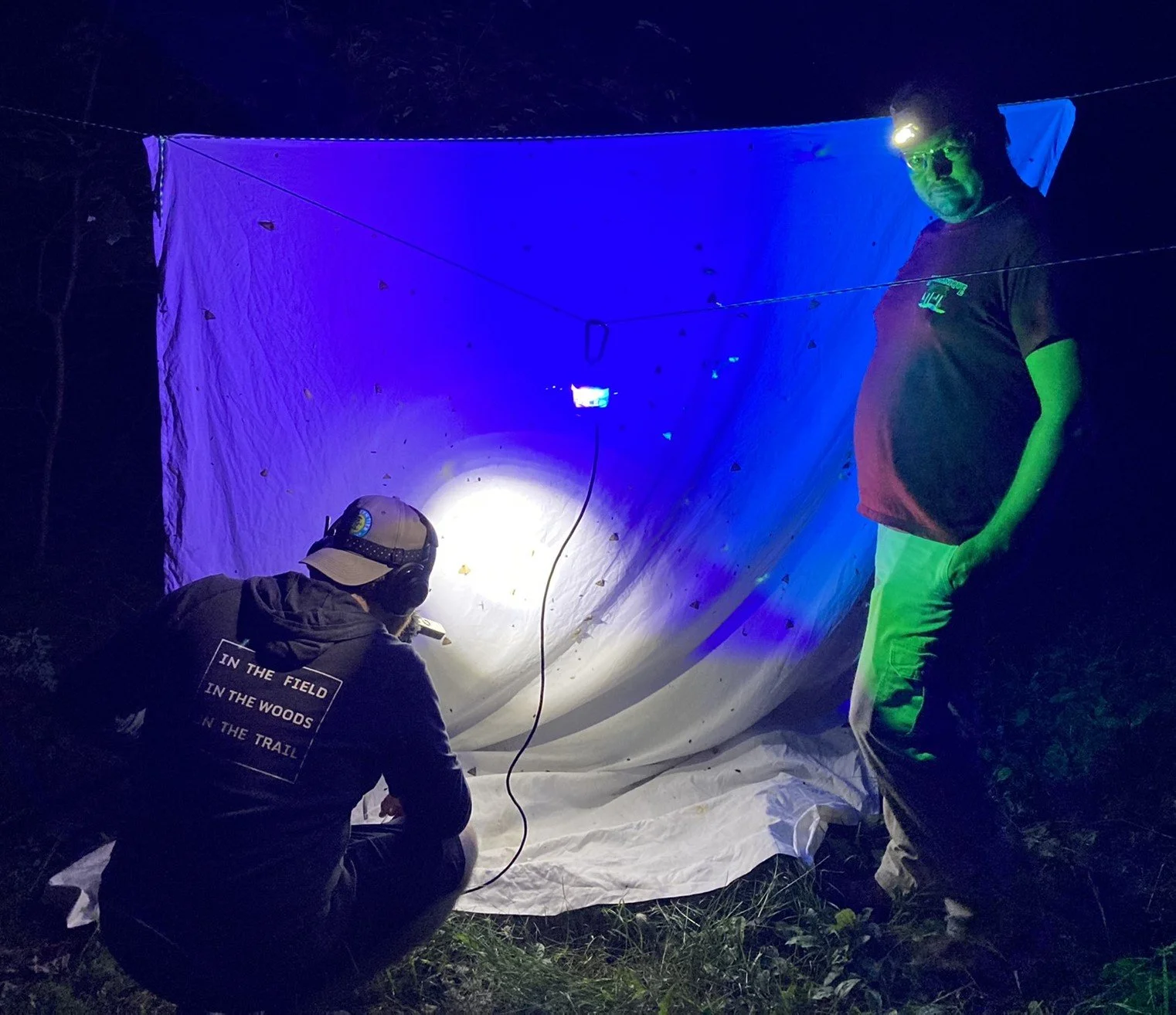
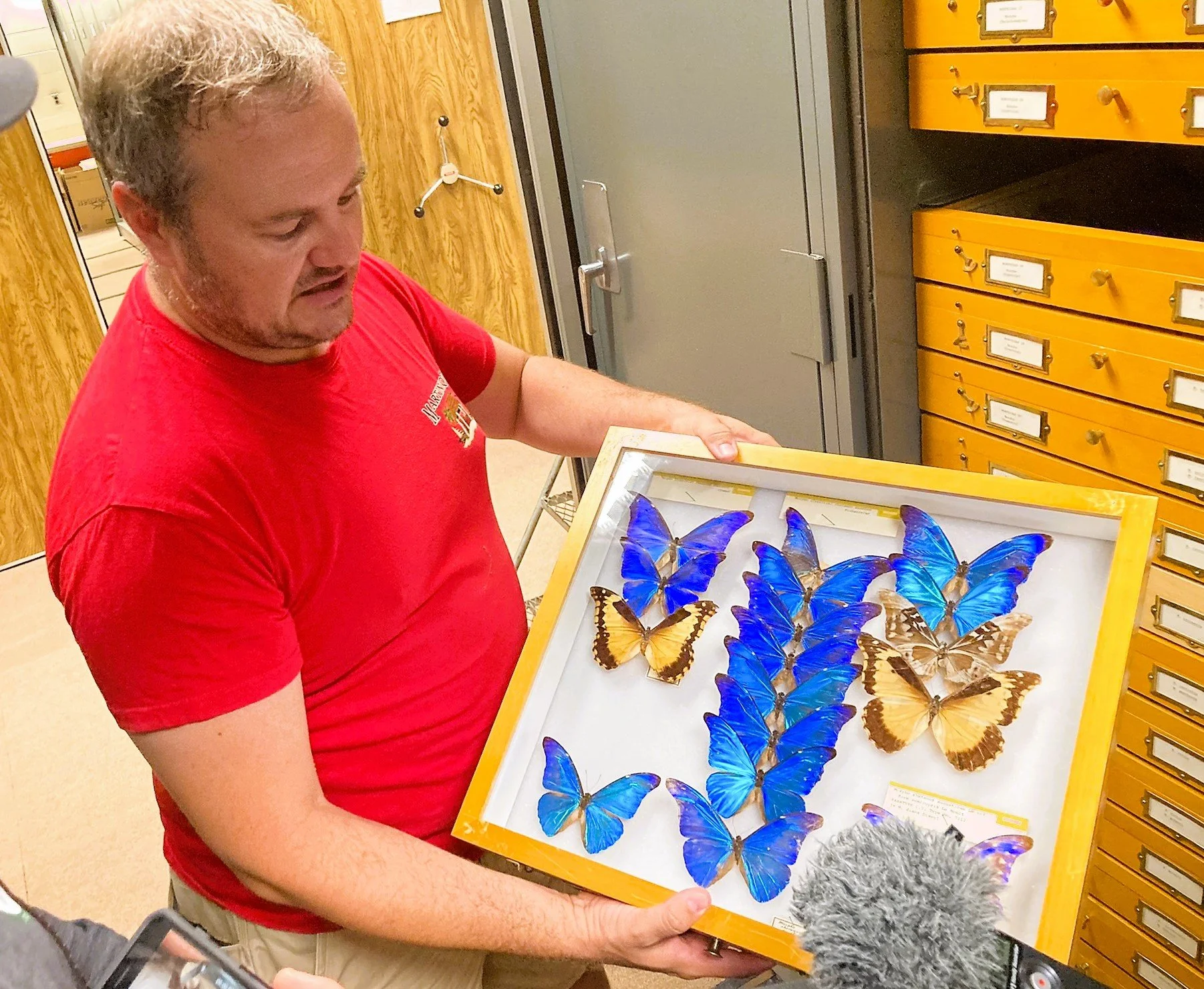













In this episode, Steve leads a discussion on the invasive Grass Carp. The guys go over the evolutionary history of grass carp and its relatives, its biology, its introduction to The Great Lakes region, why people are concerned, and anything interesting Steve found out about it.